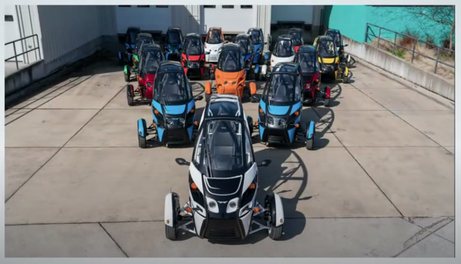Previously Published to TMC Net’s World News
Capella University (News – Alert) has released a 2015 State of the Industry report that breaks down how businesses are spending over $1200 a year on employee training and development. Employees are spending 32 hours per year in training associated with managerial and supervisory positions, mandatory training and compliances. While it is never a bad idea to provide development opportunities to your internal teams, what are you doing to keep them?
According to TechTarget, “Employee engagement strategy improves the customer experience.” In fact, more businesses have placed employee engagement strategy on their “to do” lists than ever before. They have realized that the most important element in truly optimized customer experience starts with the employees, who are now being considered customers themselves.
With continuous turnover, many companies train employees that don’t stick around long enough to provide a great return on investment. With a revolving door, companies lose resources to time, training dollars and customer loyalties. Without a justifiable ROI, providing employee perks is simply a waste of funds. Training, which is required to keep employees at their highest potential, is limited. And companies are less willing to hire entry-level professionals.
The problem is, these businesses are realizing that the entry-level professional is the new millennial generation, which is shaping the world with globalization and technology innovations. So, they are returning to the drawing board to figure out how they may better serve the servers. The underlying answer to many issues in the workforce just so happens to be employee tenure.
With contact centers blossoming for enterprise businesses, they are learning that many contact center representatives are feeling that their jobs are too redundant, taking up too much time, are too complex for basic tasks or simply aren’t satisfying their need for immediacy. Because many of these employees grew up with technology, completing a task in more than one click is just doing too much. The employee experience is everything. In fact, understanding your employee base will allow you to minimize turnover and increase engagement.
By understanding the average consumer, we notice a trend in abandonment when consumers lose patience, focus and care for a system that is too complex or just doesn’t perform well. Lags make them switch channels, and pauses lead them to refresh. Entering the same data into multiple systems has led to this issue.
Without the adoption of centralized systems and single user interfaces, the employee is faced with repetitive action across platforms until they finally reach their destination. If it’s not immediate, they don’t want it. If a job isn’t satisfying, they are quick to leave. And, what does that do for the employer? …Nothing but waste time! K.I.S.S. Keep It Simple Stupid!
In fact, how can a contact center evolve if the representatives leave at the first hiccup? How can contact centers better serve the customer experience if the employees can’t focus? How will the customers be satisfied if the employees don’t care? How is this affecting our pockets as employers? How is this affecting the evolution of our contact centers? There are so many questions and only a few answers.
Toggling between systems is not the answer. Streamlining processes and adopting more efficient technologies, however, might be the answer. But, equipping our teams with tools that make sense to them is definitely the answer.
With the integration of many third-party vendors, many of our omnichannel systems are seeing an increase in productivity, communication and collaboration… even on the go! Team members are enjoying the ability to work together, and they are providing effective even while outside the office. Developing an employee to become even better makes sense. A happy employee is a productive employee.
Productive team members teach each other. The need for basic training becomes less of an issue. The finance, instead, is there to provide training that will allow employees to become power teams, working together on behalf of a common goal.
Allowing representatives to focus on the customer, as opposed to complex systems, makes all the difference in the world. It allows them to quickly diffuse escalating situations and solve problems. It cuts call times down, and it increases the number of customers serviced in particular amount of time – without burning out our workforce. In 2016, we will most definitely see an increase in customer satisfaction. We will see happier employees, as well.




